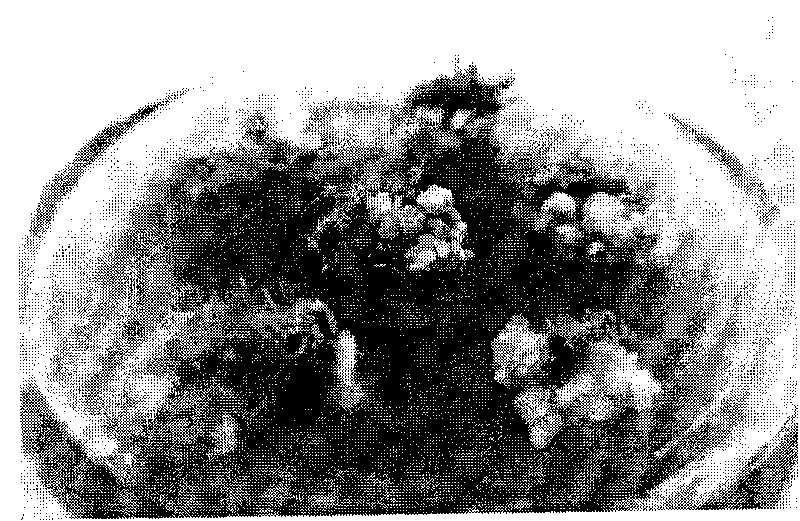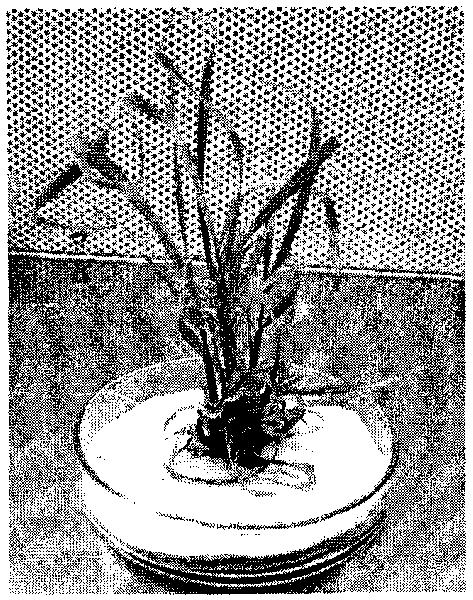Method for quickly propagating grassiness
A grass-like and fast technology, applied in the field of plant cell engineering, can solve the problems of easy shedding and germination rate, inability to naturally bloom and fruit, laborious and laborious operation, etc.
- Summary
- Abstract
- Description
- Claims
- Application Information
AI Technical Summary
Problems solved by technology
Method used
Image
Examples
Embodiment Construction
[0023] (1) Selection and sterilization of explants
[0024] From the end of October to the first ten days of November, the Elephant Grass N51 with natural differentiation booting was selected (Kongzhi Gonggong, Bai Shujuan, Zhang Yunchang, Chen Dexin. The flowering period and main botanical characters of the hybrid pennisetum parent [J]. China Grassland, 1996, (3) : 49-52) the young ear is an explant, thoroughly wipes the leaf sheath and the stem wrapped in the young ear with 70% alcohol under aseptic conditions, and strips the young ear. If the length of the young ear is less than 2cm, inoculate it directly; if the length of the young ear is 2-5cm, cut it into 2-3mm long ear segments; if the young ear length is more than 5cm, take the part within 5cm from the base of the young ear and cut it into 2-3mm long ear. part.
[0025] (2) Young panicle callus induction
[0026] Inoculate the cut sections of young panicles in the callus induction medium, the induction time is 30-35 ...
PUM
 Login to View More
Login to View More Abstract
Description
Claims
Application Information
 Login to View More
Login to View More - R&D
- Intellectual Property
- Life Sciences
- Materials
- Tech Scout
- Unparalleled Data Quality
- Higher Quality Content
- 60% Fewer Hallucinations
Browse by: Latest US Patents, China's latest patents, Technical Efficacy Thesaurus, Application Domain, Technology Topic, Popular Technical Reports.
© 2025 PatSnap. All rights reserved.Legal|Privacy policy|Modern Slavery Act Transparency Statement|Sitemap|About US| Contact US: help@patsnap.com


